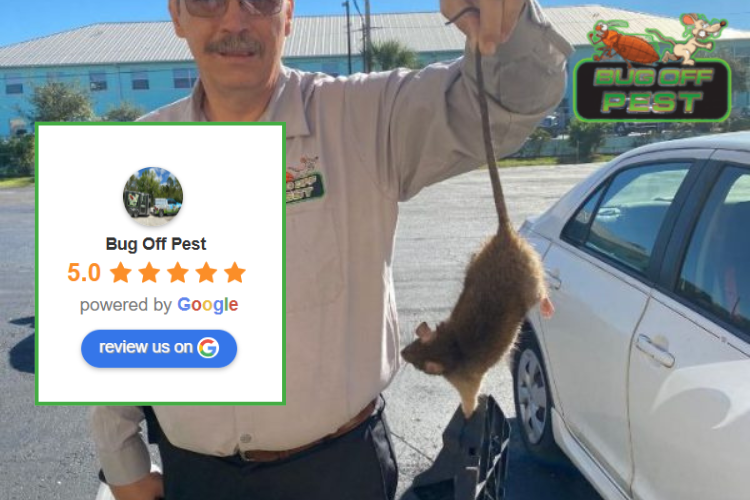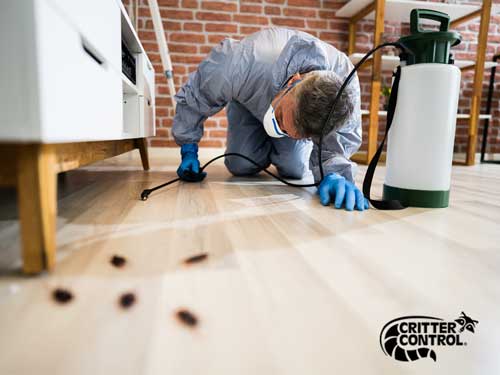Trusted Cockroach Exterminator Port Charlotte to Eliminate Pests Fast
Learn More About the most up to date Developments in Parasite Control and How to Implement Efficient Therapy Solutions
Recently, the area of pest control has experienced substantial innovations, driven by the need for efficient and sustainable treatment services. Ingenious techniques such as Integrated Bug Administration (IPM) incorporate green experiment cutting-edge modern technology, enhancing both efficacy and environmental responsibility. Furthermore, the combination of clever modern technologies and do it yourself techniques has empowered people to take on parasite concerns better. As we discover these growths, it comes to be vital to comprehend how ideal to implement these techniques in various setups to accomplish optimal outcomes. The ramifications for insect monitoring techniques might be transformative.
Eco-Friendly Pest Control Options
In current years, the need for eco-friendly insect control alternatives has surged as house owners and organizations alike look for lasting choices to traditional chemical treatments. This shift is driven by growing environmental awareness and a wish to lessen the wellness risks connected with synthetic pesticides.

Environmentally friendly pest control approaches encompass a series of methods that prioritize making use of all-natural compounds and methods. Integrated Parasite Administration (IPM) is one such strategy, integrating biological, cultural, and mechanical methods to handle pest populations while lowering dependence on chemicals (Wildlife removal services). This holistic method stresses prevention via environment manipulation and the intro of natural killers, therefore fostering a well balanced environment
One more popular choice is the use of botanical chemicals originated from plants, which often tend to be less dangerous to non-target organisms. Products like neem oil and diatomaceous planet have obtained traction for their efficiency in regulating insects while posturing very little threats to human health and the setting.
In addition, exclusion strategies, such as securing entry factors and keeping tidiness, play an important duty in environmentally friendly pest administration. By embracing these lasting techniques, individuals and services can successfully handle insects while promoting a much healthier earth for future generations.
Smart Technology in Insect Administration
Advancement is improving the landscape of pest administration, with wise innovation becoming a pivotal force in improving effectiveness and efficiency - Wildlife removal services. The assimilation of Internet of Things (IoT) gadgets, man-made knowledge (AI), and information analytics is reinventing exactly how bug control specialists come close to problems
Smart catches geared up with sensors can find parasite task in real-time, sending out instant alerts to operators. This permits timely reactions, reducing damage and reducing the requirement for comprehensive treatments. Additionally, AI algorithms assess historical data to predict pest behavior, making it possible for aggressive interventions based on ecological problems and invasion patterns.
Drones and automatic vehicles are also playing a considerable function in insect monitoring, giving aerial evaluations of large locations, determining hotspots, and even dispersing targeted treatments. These modern technologies not just improve operations yet also enhance safety by restricting human exposure to possibly unsafe chemicals.
Moreover, mobile applications empower customers to check insect activity and gain access to expert recommendations, cultivating a collective approach to pest monitoring. In general, the fostering of clever innovation is setting a brand-new requirement in pest control, highlighting data-driven decisions and lasting methods that ultimately benefit both professionals and house owners alike.
Integrated Bug Management Methods
Integrated Pest Monitoring (IPM) utilizes a holistic technique to pest control, incorporating different approaches to effectively handle parasite populaces while minimizing dangers to human health and the setting. IPM revolves around comprehending the pest life process, their all-natural enemies, and the community in which they grow.
One of the fundamental elements of IPM is monitoring pest populations through routine examinations and information collection. This permits the identification of bug thresholds, figuring out have a peek at this website when treatment is essential. Cultural practices, such as crop environment, turning, and cleanliness manipulation, are important in minimizing parasite prevalence and promoting plant health.
Mechanical controls, including traps and barriers, are also vital in IPM. These approaches can literally get rid of or hinder bugs without using chemicals. When needed, the sensible application of chemical controls is utilized, concentrating on targeted treatments that lessen ecological effect.
Education and collaboration among stakeholders, consisting of farmers, parasite control experts, and the community, are critical for the effective implementation of IPM techniques. By focusing on lasting practices, IPM not only addresses pest concerns however additionally cultivates a healthier community.
Biological Control Approaches
Countless biological control methods are significantly identified for their efficiency in managing parasite populaces while advertising environmental balance. These approaches harness all-natural predators, bloodsuckers, and microorganisms to minimize pest numbers without relying upon artificial chemicals. The intro of ladybugs can efficiently regulate aphid populaces, while nematodes target soil-dwelling insect larvae.
Furthermore, the usage of microbial chemicals, such as Bacillus thuringiensis (Bt), offers an environmentally friendly choice for handling caterpillar parasites. These products especially target pest varieties, lessening harm to valuable insects and pollinators. In addition, conservation biological control stresses enhancing environments for all-natural enemies, such as birds and valuable insects, thereby encouraging their visibility in agricultural systems.
Research remains to expose cutting-edge methods within this area, such as using pheromones to interrupt pest breeding patterns or the advancement of biocontrol representatives through genetic engineering. Carrying out these approaches can bring about lasting pest management methods that alleviate the dependence on chemical treatments, eventually fostering healthier environments. As understanding of these strategies expands, they are becoming indispensable parts of incorporated pest management (IPM) methods, providing an equilibrium in between reliable bug control and environmental stewardship.
Do It Yourself Bug Control Solutions
As home owners look for efficient ways to take on parasite concerns, do it yourself bug control services have obtained popularity for their accessibility and cost-effectiveness. These methods encourage people to deal with invasions making use of easily available materials and techniques, usually without the demand for professional intervention.

Additionally, maintaining appropriate sanitation and normal inspections can prevent pest access and nesting (Wildlife removal services). Straightforward techniques, such as securing splits, removing food resources, and decluttering, can significantly lessen parasite populations. Traps, both homemade and readily offered, can likewise offer efficient services for tracking and controlling specific parasites like rats or insects
Conclusion
The assimilation of environment-friendly bug control options, wise technology, and innovative management methods presents a thorough method to reliable pest management. By embracing Integrated Insect Management (IPM) and making use of biological control techniques, along with DIY solutions, sustainable and liable parasite control can be achieved.
Environment-friendly bug control techniques incorporate a range of approaches that prioritize the use of all-natural materials and practices. Integrated Parasite Monitoring (IPM) is one such approach, integrating organic, social, and mechanical methods to manage insect populaces while decreasing dependence on chemicals. As recognition of these techniques grows, they are becoming important elements of incorporated insect monitoring (IPM) approaches, offering a balance between effective pest control and ecological stewardship.
The assimilation of green bug control options, smart technology, and innovative monitoring approaches presents an extensive method to efficient insect management. By embracing Integrated Parasite Monitoring (IPM) and making use of organic control techniques, together with DIY solutions, responsible and lasting parasite control can be accomplished.